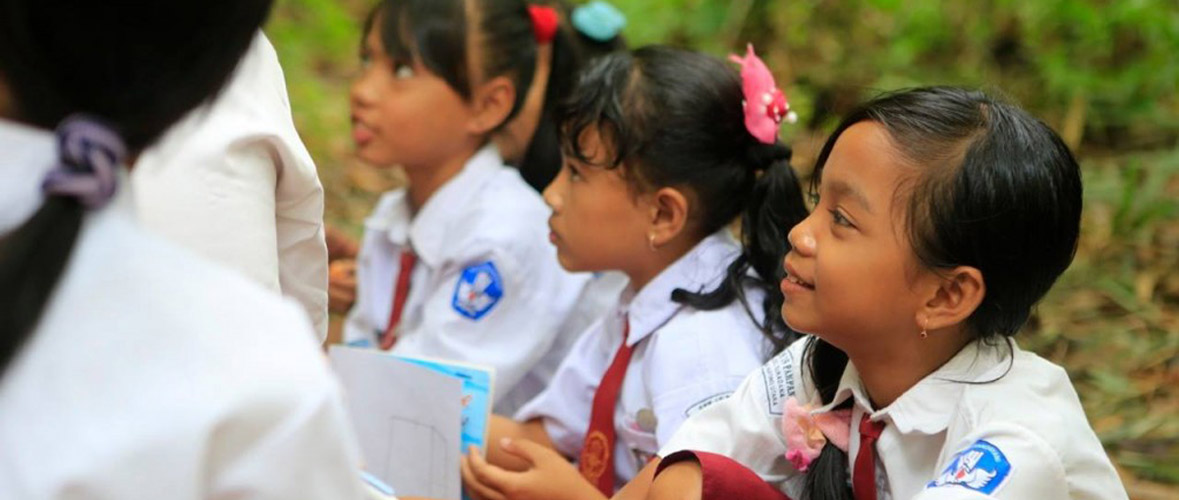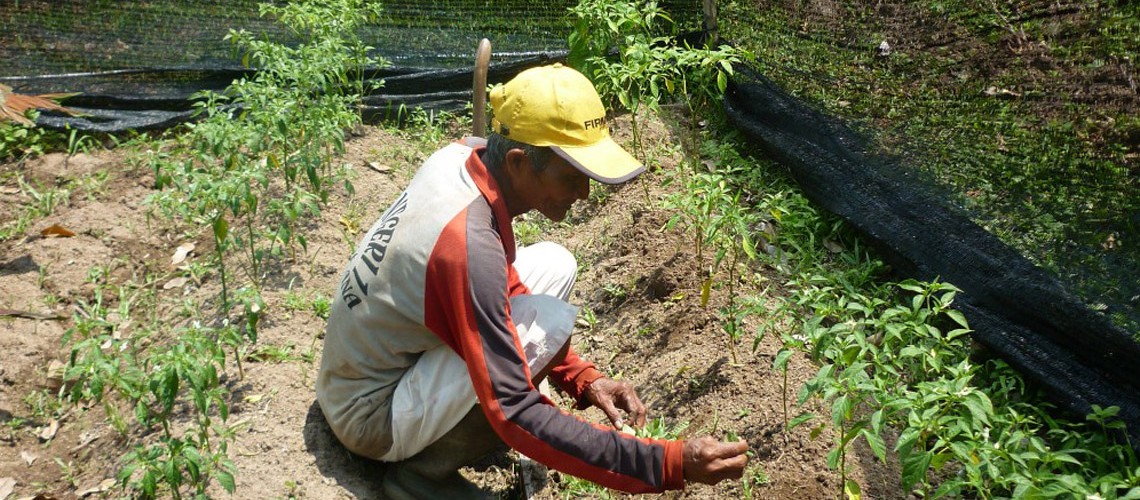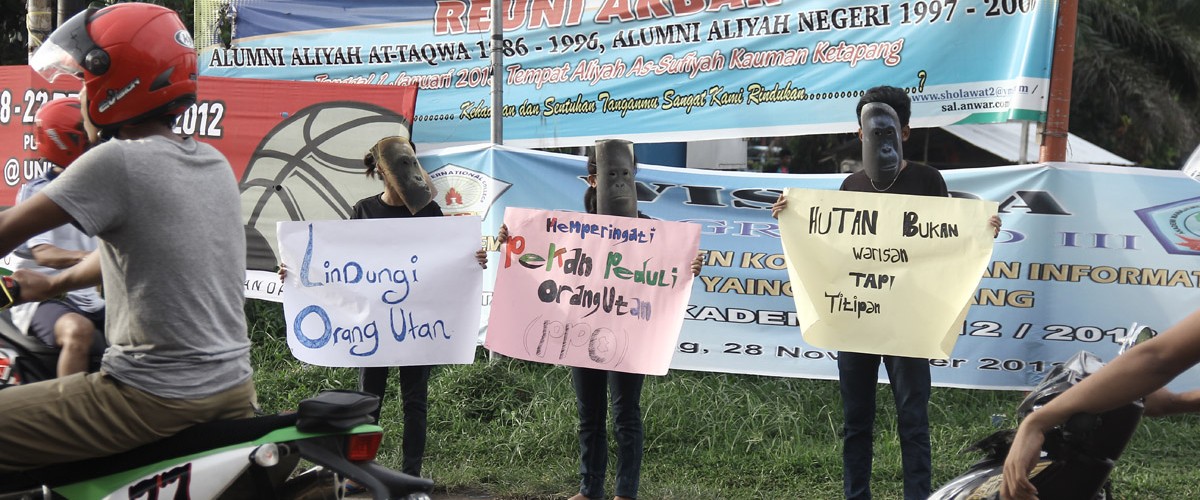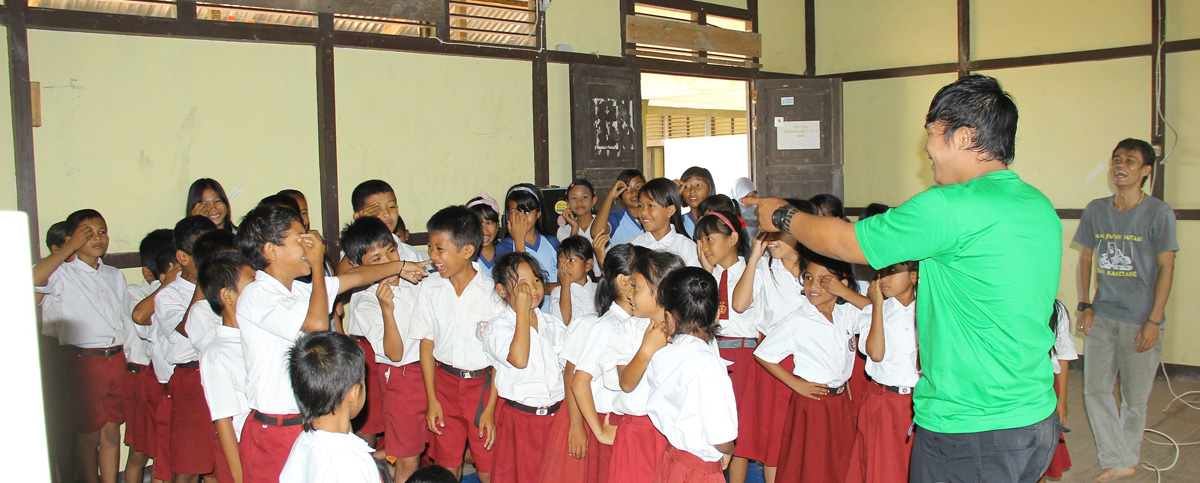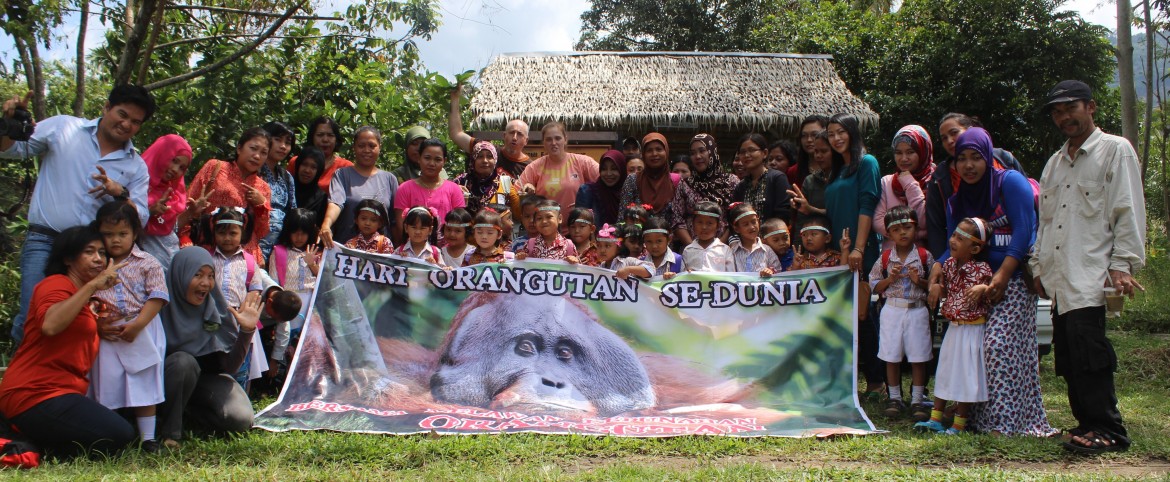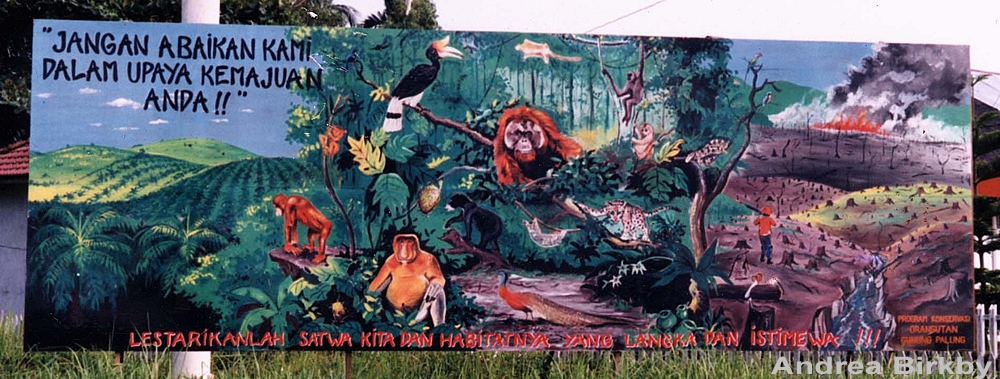By Mahendra, Bentangor Office Assistant/Guard
My name is Mahendra and I am the Office Assistant and Security Guard at the Bentangor Environmental Education Center. My daily activities involve maintaining the facility and security of Bentangor, located in Pampang Harapan Village, Sukadana District, Kayong Utara Regency. During my time working for Yayasan Palung/GPOCP I have been involved in a few different capacity building activities. YP/GPOCP values increasing the capacity of all of the staff, both within the conservation and research teams, and this month I had the opportunity to have a totally new experience and increase my knowledge and skills.
This month, starting on May 8th, I took part in the biodiversity survey of the Padu Banjar Village Forest (Hutan Desa) for one week. I gained experience collecting data on a variety of factors, including canopy density, orangutan nest classes, tree diameters, tree height and GPS data point collection.

Before I entered the forest, I assumed it would probably be no different from the other forests I have seen in Kalimantan. I assumed this peat swamp forest had an ample water supply, dense soil, and easy access routes. However, I turned out to be very wrong! I quickly realized this was different when I entered a peat swamp for the first time. The path to the first forest transect had not been traversed in a year (since the last annual biodiversity survey) and was so overgrown that it was not even visible at the start! A distance of 100 meters, that previously felt easy to walk in an open field, felt like 300 meters in the peat swamp because of the difficult terrain! We also brought a lot of heavy logistical items needed for the week, which made the trip even more difficult.
Not only that, I fell into holes on the surface of calm water several times and also fell on flat ground! This is due to the texture of the peat soil which looked flat but was very soft when I stepped on it. My feet were easily trapped or sucked in to the peat. Sometimes I waded through water that was up to my thighs! This made the boots we wore heavier, coupled with the weight of the goods we carried, so that my energy was quickly drained. Under these conditions, I found that I needed a lot of water and become thirsty quickly. Fortunately, on the way to the forest transects, we found peat water that we could drink. This was my first experience voluntarily drinking peat water.

Despite feeling tired from this long journey, I was excited to see beautiful plants along the way, such as “kantong semar” (pitcher plants) and “sirih hutan” (forest spiked pepper). I learned from staff Botanist, Gunawan Wibisono, that the red color of the peat water is due to accumulated tannins and that the plants that have secondary metabolites, which are believed locally to have potential as medicinal plants. Animal Protection Manager, Erik Sulidra, taught me to listen closely to the sounds of various birds to try to identify them. We saw swamp frogs and turtles too. I also got to see, first-hand, various types of orangutan nests. Most of the nests I saw were class “C”, but I even saw one class “A” nest (the newest) with orangutan feces right underneath! I felt so lucky to be able to make this observation in person.
Throughout this week, I gained an in depth understanding of the peat swap forest habitat and an increased awareness of the potential of peat swamps with their rich plant and animal diversity. This really emphasized for me the importance of our joint efforts in preserving these forests.

